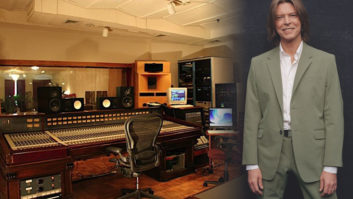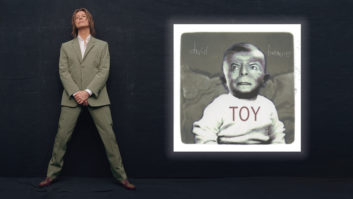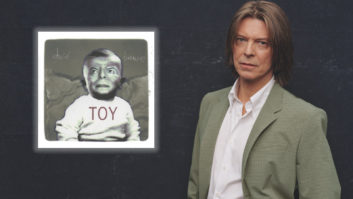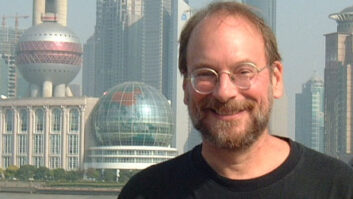One of the most diverse and entertaining tours of the summer was Area2, which featured tour organizer Moby, as well as David Bowie, Busta Rhymes, the Blue Man Group and Ash. A second stage featured various DJs, including John Digweed, Diesel-boy and Avalanches. Mix caught the last night of the tour at the dramatic Gorge Amphitheater near Seattle.
“This tour is so intensive, there’s no time for soundchecks,” says John Pennington, FOH engineer for Moby (pictured at left with Brad Ervin, system engineer for Showco/Clair Bros.). Fortunately, production manager Jake Berry put together a sound system that included the Showconsole digital control surface, which features instant recall of all mix parameters. “The desk takes care of all the compressors and gates,” says Pennington. “The only extra is a Focusrite Producer Pack, which I have on Moby’s vocal. And because it’s so loud onstage and everything is coming down his microphone, I stick a little bit of expander on it—2 or 3 dB—for when he’s not talking and he’s running past the monitors.” Pennington’s reverbs include two Lexicon PCM80s, a Yamaha 990 and an Eventide H3000. “I use the thickener patch on the H3000 for Moby’s vocal,” he explains. “It fits in with that kind of techno thing.”
Drew Consalvo, Moby’s monitor engineer, has been using the Midas Heritage 3000 console for several years. “I really accept no substitute,” he notes. “I love the way that desk sounds, the preamps, the EQ section. It’s a great console.” Three of the bandmembers use in-ear monitors (IEMs), either Shure PSM 600 or 700 systems. For Moby’s wedge monitors, Consalvo uses a Shure DFR11EQ computer-controlled digital equalizer. “It’s like having a second mixer,” he notes. “I basically use it to get rid of the hot spots in the monitor speaker response, and then once I’ve put in all of my filters, I can then tailor it to sound musical.”
All of Bowie’s musicians use in-ear monitor systems, and monitor engineer Michael Prowda mixes for them on a Paragon II, “a fantastic monitor-console. I’m also very pleased with the Sennheiser EW 300 Series in-ear systems,” says Prowda, who routes each of the eight in-ear mixes through an Aphex Dominator before the wireless input stage. Bowie sings into a Shure Beta 58A, while backing singers use Beta 87Cs. The other mics onstage are a combination of Shure, Sennheiser and Audio-Technica models.
L-R: Josh Sadd, monitor tech for Moby; Tim Fraleigh, monitor tech from Firehouse Productions (Bowie); Michael Prowda, monitor engineer for Bowie; Drew Consalvo, monitor engineer for Moby.
Pete Keppler, FOH engineer for David Bowie, mixes on a Yamaha PM-1D supplied by Firehouse Productions, which also supplied Bowie’s monitor rig. “I’m still relatively new to the desk—I’ve done about 15 shows on it—but I love it,” says Keppler, who makes good use of the PM-1D’s ability to store mix parameters on flashcard memory. “So every show, I can update little things and store different scenes for different songs. The other thing I like is it’s got eight onboard effects processors; for David’s voice, I’m using a doubler program that I built in the PM-1D.” Keppler also used the PM-1D’s onboard processors for all drum reverbs and vocal delays, relying on two TC Electronic M3000s for additional outboard effects.
Clair Bros. supplied 10 full-range Clair I-4s on each side, supplemented with I-4B bass cabinets in the main hang. Additional I-4s were used as “wing” speakers, and modified S-4s provided additional sub bass.







